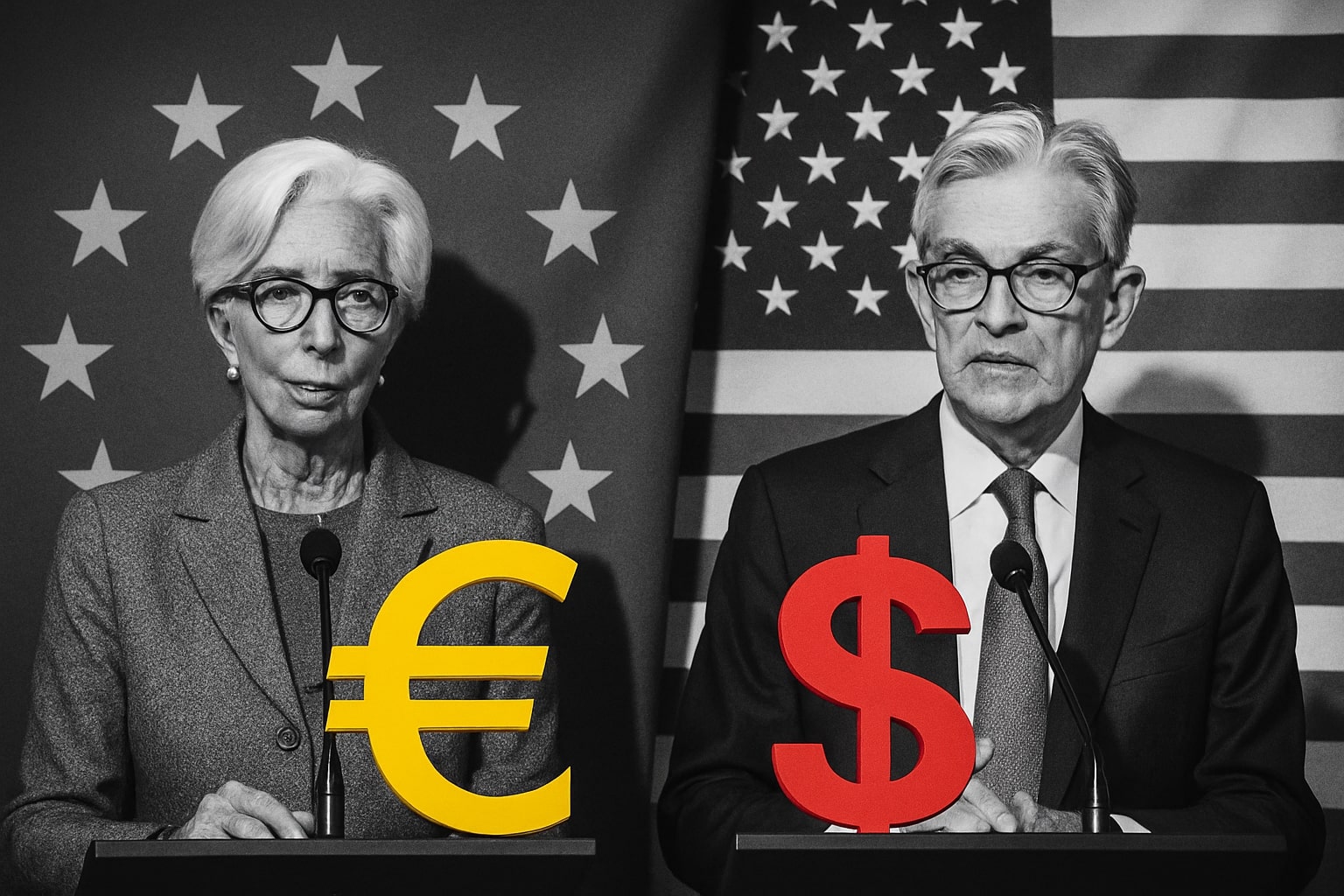
USD/JPY Price Forecast - Dollar to Yen (¥153.41) Dips from 8-Month High as Fed Cut Odds Hit 70%
The yen gains as Japan signals readiness to act against ¥154.48 peaks, while U.S. policy uncertainty and a 70% chance of a Fed rate cut add pressure on the dollar | That's TradingNEWS
USD/JPY Slides from Eight-Month High as Intervention Risks and Fed Uncertainty Collide
The USD/JPY pair eased to ¥153.41, losing 0.38% for the week as Japan’s renewed intervention warnings met mounting U.S. policy uncertainty caused by the prolonged government shutdown. After touching an eight-month peak near ¥154.48, the dollar-yen cross reversed as Japanese officials expressed “high urgency” over the yen’s depreciation, while mixed U.S. data left the greenback struggling to maintain momentum. Finance Minister Satsuki Katayama’s warning that “rapid, one-sided moves” would not be tolerated signaled direct readiness for market action, cooling speculative longs above ¥154.25 and reinforcing near-term resistance at ¥155.00.
Fed Policy Fog and the U.S. Government Shutdown Pressure USD/JPY
The ongoing U.S. government shutdown, now in its 39th day, continues to distort policy expectations. Traders lacked fresh CPI and PPI data releases as the Senate gridlock postponed key economic indicators that could define the Federal Reserve’s December rate decision. The CME FedWatch Tool now shows a 70% probability of a 25-basis-point cut, up from 63% a week earlier. Yet, the U.S. Dollar Index remains supported near 105.1, reflecting underlying resilience driven by stronger ISM Services PMI at 53.2 and better-than-expected ADP private payrolls showing 42,000 new jobs against expectations of 32,000. The divergence between robust U.S. services activity and weak manufacturing, which contracted at 47.8, keeps dollar sentiment conflicted. For USD/JPY, the absence of inflation data means policy clarity remains elusive — traders are instead following Fed speeches from John Williams, Christopher Waller, and Lorie Logan to gauge the direction of rates before the Dec. 10 FOMC meeting.
BoJ Balances Yen Weakness and Wage Pressures Ahead of 2026 Policy Reset
On the Japanese side, the Bank of Japan (BoJ) faces a tightening conundrum. Its Summary of Opinions, released Nov 10, is expected to reveal a growing internal split. Two policymakers already favored a rate hike in October, breaking years of ultra-loose stance. Inflation remains steady at 3.0% YoY, down from 3.3% in August, while real wages fell 1.4% YoY in September. Unions such as Rengo and UA Zensen are demanding 5–6% wage increases during the 2026 spring negotiations, heightening pressure on the BoJ to raise rates sooner. Governor Kazuo Ueda has acknowledged the need for stronger wage-driven inflation before tightening but faces political pressure from the Finance Ministry to stem import-driven price surges. Producer prices, forecast to rise 2.5% YoY in October versus 2.7% in September, could reinforce dovish positioning if confirmed, although a surprise uptick could reprice BoJ expectations rapidly.
Technical Structure Shows USD/JPY at Crossroads
Technically, USD/JPY trades above both the 50-day EMA at ¥152.80 and the 200-day EMA at ¥150.50, sustaining a bullish medium-term structure. The pair’s inability to close above ¥154.48 signaled a potential exhaustion zone, with intraday resistance near ¥155.00 — a psychological level linked to April’s post-intervention peak. Support is forming near ¥153.00, followed by the ¥150.00 psychological floor, where traders expect the Ministry of Finance to intervene if yen depreciation accelerates. A decisive breakout above ¥155.88 (February 2025 high) could trigger stops and push momentum toward ¥156.88, but repeated failures around ¥154.25 increase the probability of a consolidation phase or mild retracement toward ¥151.90.
Macroeconomic Frictions and Market Positioning Shape the Next Move
Japan’s export slowdown and weak factory output deepen the yen’s structural headwinds, but recent U.S. job cut data (+13% MoM) have started to erode dollar confidence. Meanwhile, Trump’s proposed tariff extensions, now under Supreme Court review, add volatility, with investors pricing a 60% probability that the Court limits executive tariff powers. If tariffs are constrained, Japanese exporters may benefit, supporting yen strength into December. Market positioning data from CFTC show speculative long positions in USD/JPY near 83,000 contracts, the highest since May, indicating the pair is stretched. Any signal of BoJ tightening or U.S. disinflation could trigger sharp unwinds toward ¥150.00. Conversely, if U.S. CPI prints at 3.1% or higher and retail sales outperform expectations at +0.2% MoM, the dollar could reclaim ¥155.00 swiftly.
Read More
-
ARTY ETF (NYSEARCA:ARTY) Climbs To $48.18 As AI Boom Pushes Assets Past $2B
09.11.2025 · TradingNEWS ArchiveStocks
-
XRP ETFs XRPI And XRPR Rally To $13.98 And $19.46 As SEC Countdown Sparks Institutional Frenzy
09.11.2025 · TradingNEWS ArchiveCrypto
-
Natural Gas Price (NG=F) Falls to $4.31 as Record U.S. Output and Unseasonably Warm Weather Crush Demand
09.11.2025 · TradingNEWS ArchiveCommodities
-
GBP/USD Price Forecast - Pound Soars to $1.3160 as Bank of England Holds Rates and U.S. Dollar Weakens
09.11.2025 · TradingNEWS ArchiveForex
Equities, Yield Differentials, and Capital Flows Intertwine with FX Sentiment
The divergence between U.S. and Japanese 10-year yields, now hovering near 390 bps, continues to anchor carry trades in favor of the dollar. However, equity volatility adds uncertainty. The S&P 500 (SPX) fell 1.8% last week before recovering half those losses on Friday, while Nikkei 225 dropped 3.86%, dragged by weak industrials and auto exporters. Despite the selloff, Japan’s Topix Banks Index gained 1.2%, reflecting expectations of higher domestic rates. Japanese government bond yields at 0.96%, the highest since 2013, reinforce the perception that the BoJ’s normalization timeline is accelerating. That narrative, if sustained, could narrow the yield spread and exert downward pressure on USD/JPY heading into December.
USD/JPY Forward Outlook and Strategic Bias
The next decisive catalyst remains the outcome of the BoJ Summary of Opinions and resumption of U.S. CPI/PPI data flow once the government reopens. If the Fed maintains a dovish tone and Japanese wage expectations strengthen, USD/JPY could retrace toward ¥150–¥151 before finding a new equilibrium. However, if inflation data surprises to the upside, reinforcing the Fed’s hawkish tilt, the pair could reattempt the ¥155.00–¥156.00 resistance area. Cross-asset correlations show rising yen sensitivity to U.S. Treasury yields and equity risk, underscoring its role as a volatility hedge once again. For now, the fundamental landscape favors consolidation with downside risk, reflecting intervention vigilance, fragile U.S. data, and an evolving BoJ stance. Verdict: HOLD – Neutral bias between ¥151.90 and ¥155.00, awaiting clarity from Fed and BoJ communications.



















